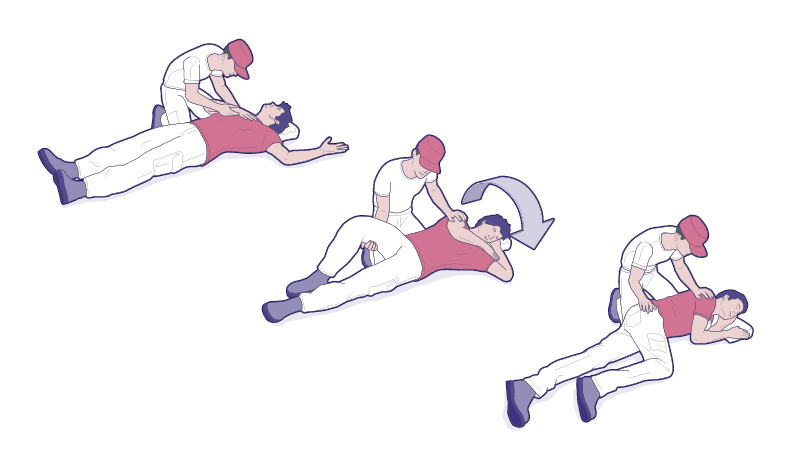Understanding epilepsy
Explore this health file to better understand epilepsy: its causes, its symptoms but also the right thing to do in case of a seizure.

Posted on
I. Definition of epilepsy:
Epilepsy is a chronic disease that affects the brain. It is one of the most common neurological diseases after migraine. It is characterized by recurrent epileptic seizures due to a disturbance in the electrical activity of the brain. Some seizures manifest themselves as involuntary tremors that affect only one part of the body, in which case they are called partial seizures. They can also affect the whole body and be accompanied by a loss of consciousness and control of the bladder and intestinal evacuation, in which case they are called generalized seizures.
Seizures can vary in intensity from brief loss of attention or small muscle twitches to severe and prolonged convulsions.
The frequency of seizures can also fluctuate, they can appear once a year or several times a day.
However, a single seizure does not mean that you have epilepsy. Epilepsy is defined by the occurrence of at least two spontaneous seizures. [1][2][3]
Key figures in 2022:
– 50 million people worldwide have epilepsy. [1]
– Worldwide, an estimated 5 million people are diagnosed with epilepsy each year [1].
– 80% of people with epilepsy live in middle and low-income countries. [1]
– 75% of cases are reported before the age of 18 [4].
II. Causes
-
Particular situations at the origin of a single epileptic seizure:
In some cases, seizures may occur in a single and unique way, in which case it is a single seizure of epilepsy and not an epileptic disease. [2]
The origin of these seizures can be [2] :
– A metabolic abnormality (hypoglycemia in a diabetic person, insufficient blood calcium level, insufficient blood sodium level).
– Epileptogenic drugs (such as antidepressants and some neuroleptics)
– Intoxication (from cocaine or amphetamines etc.)
-
Causes of epileptic disease:
If the seizures recur at least 2 times spontaneously, then it will be an epileptic disease. The cause of 50% of the cases of epilepsy in the world remains unknown.
Nevertheless, some of the known causes can be classified under different categories such as:[1][2][3]
- A genetic component often related to abnormalities in several genes (present in 2/3 of epilepsies)
- Brain damage due to prenatal or perinatal trauma (hypoxia, birth trauma or low birth weight)
- Congenital anomalies or genetic disorders associated with brain malformations
- Severe head trauma
- Stroke that reduces the amount of oxygen to the brain
- Infectious diseases of the nervous system, such as meningitis, encephalitis, etc.
- A brain tumor
III. The symptoms
The symptoms of epilepsy are numerous, they differ according to the location of the epileptogenic zone in the brain.
As a reminder, when only one area of the brain is affected by excessive electrical discharges, it is called a partial epileptic seizure
For partial epileptic seizure, the symptoms are the following[5] :
- Uncontrolled seizures located only in one part of the body like the arm or half of the body for example
- A feeling of pins and needles in one hand, for example.
- Abnormal and repeated gesticulations
- Accelerated heart rate and pain
- Visual, auditory, gustatory or olfactory hallucinations
- Language disorders
Conversely, when excessive electrical discharges affect several areas of the brain, it is called a generalized epileptic seizure.
In generalized epileptic seizures, the symptoms include total loss of consciousness, muscle contraction, breathing blockage, complete muscle relaxation and sometimes loss of urine. [5][3]
The generalized epileptic seizure most often manifests as a tonicoclonic seizure with 3 phases:
- The tonic phase, which lasts 1 to 2 minutes and during which the muscles contract and sometimes cause tongue biting.
- The clonic phase which lasts about 20 seconds. During this phase, the muscles contract in diffuse and irregular series and breathing may be blocked.
- The resolutive phase, during which the muscles relax completely and breathing becomes noisy.
This seizure lasts less than ten minutes. A sudden fall or other injury may result from this type of seizure. After the seizure, the person slowly regains consciousness but usually does not remember what happened.
Generalized seizures can also occur as myoclonic seizures: these are symmetrical muscle spasms that occur in fully conscious adolescents and are stimulated by reduced sleep, abrupt awakenings or exposure to bright light.
IV. Treatment
With treatment, epileptic seizures can be controlled.
In fact, 70% of patients respond well to anti-epileptic drugs, which are made to reduce the intensity and frequency of seizures. These drugs do not always have to be taken for life since epilepsy can improve over time. [4]
However, some patients do not respond to the treatments, and the proposed solution in this case is surgery to remove the epileptogenic area of the brain, if it is accessible and that its removal does not cause major neurological damage. For palliative purposes, which means to reduce the burden on the patient, the implantation of a small stimulator to stimulate the vagus nerve can be proposed. This sends a signal to the brain to reduce the frequency of seizures. [4]
V. Prevention
According to the WHO, 25% of epilepsy cases are preventable. However, there are factors that can increase the risk of epileptic seizures such as lack of sleep, fatigue, strenuous exercise, noise, flashing lights, heat, etc. [6][1].
In order to minimize this risk, it is important that people with epilepsy avoid these triggers. [6]
It is also essential to quit smoking, stop drinking alcohol, using drugs, and to prevent yourself from getting central nervous system infections.[1]
VI. How to help someone having an epileptic seizure?
It is impossible to stop an epileptic seizure that has already started, so you will have to let the person have the seizure while providing support throughout the event.
So, what are the right things to do when someone experiences a seizure? [6][7]
- Place the person in a safe lateral position in an open area without carrying them.
- Loosen clothing, remove glasses, etc.
- Place a folded piece of clothing under the person’s head for protection.
- Stay with the person during the seizure without blocking the seizure movements.
- Do not put anything in the person’s mouth or give them anything to drink during the seizure to avoid the risk of swallowing their tongue.
- Provide support and wait for the seizure to end.
Also, do not hesitate to call a doctor or the fire department in these cases: [6]
- The patient has injured himself or herself.
- The seizure lasts longer than five minutes.
- The patient does not regain consciousness after ten minutes.
- The seizure recurs, with no return to normal in the interim.

Sources :
[1] https://www.who.int/fr/news-room/fact-sheets/detail/epilepsy#:~:text=L%27%C3%A9pilepsie%20est%20une%20affection%20chronique%20du%20cerveau%20qui%20touche,du%20corps%20(crises%20g%C3%A9n%C3%A9ralis%C3%A9es).
[2] https://www.ameli.fr/assure/sante/themes/epilepsie/definition-causes-facteurs-favorisants
[3] https://www.vidal.fr/maladies/systeme-nerveux/epilepsie.html
[4] https://www.frm.org/recherches-maladies-neurologiques/epilepsie/focus-epilepsie#:~:text=Les%20chiffres%20cl%C3%A9s%20de%20l%27%C3%A9pilepsie&text=Selon%20l%27Organisation%20Mondiale%20de,personnes%20sont%20concern%C3%A9es%20en%20France.
[5] https://www.ameli.fr/seine-saint-denis/assure/sante/themes/epilepsie/symptomes-diagnostic
[6] https://www.vidal.fr/maladies/systeme-nerveux/epilepsie/symptomes.html
[7] https://www.ameli.fr/assure/sante/themes/epilepsie/symptomes-diagnostic
